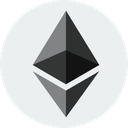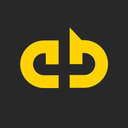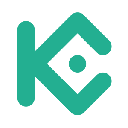
Review on Tezos by Saleh Bayramli

Today I am going to talk you about Tezos token and its features.
Tezos currency; it is a multi-purpose platform that supports decentralized applications (DApps) and smart contracts. It was developed by former Morgan Stanley analyst Arthur Breitman with the support of his wife Kathleen Breitman. Tezos raised $232 million through its initial cryptocurrency product (ICO) in 2017, and launched its testnet in July 2018, one year after the ICO. The Tezos platform is designed to combine self-healing protocols and chain governance to deal with changes in the network. The platform also supports complete Turing smart contracts. Tezos is also supported by the Switzerland-based Tezos Foundation, which is working to promote the Tezos agreement through donations and other capital tools. Chapter
What is a Special Coin?
Tezos Coin, Tezos baker (representative) earns Tezos tokens through mortgages instead of mining. In the Tezos roasting system, each roaster will receive a reward for the block they signed and published in exchange for their deposit in the staking method. Then testify and verify this block. Dishonest bakers will lose their XTZ deposits. This encourages users to act in an ethical manner in the Tezos ecosystem. The OCaml programming language used by Tezos is said to provide a "practical, basic, and object-oriented style." Tezos aims to create an autonomous decentralized blockchain by building a true digital community. This digital community has joined their common interests and interests, aiming to further develop the platform by making joint decisions with Tezos (XTZ) tokens. Tezos, is a smart contract platform like Ethereum. In addition to the Ethereum smart contract system, it also allows changes to the platform. Therefore, it ensures the necessary supervision of the needs that may arise over time, not through hard forks, but through the decisions of the digital society. The developers carry out the developments that are deemed necessary on the Tezos platform. When there is a development needed on the platform, the software developer submits this request to the Tezos digital community. To support this request, the Tezos community pays developers Tezos (XTZ) tokens. Therefore, the development to be carried out is submitted to the society for approval, and the development with the greatest support is carried out. When will
Tezos
coins be issued?
Although the launch date of Tezos Coin is 2017, its creation date can be traced back to 2014. It works by providing incentives for users who want to participate in the development of the protocol center. However, the blockchain uses formal mathematical proofs to ensure that certain key features of the Tezos protocol are retained. This ensures that the network remains decentralized. Mining is not done on the Tezos blockchain network. Because the Tezos blockchain network uses a Proof of Stake (DPoS) consensus mechanism instead of a proof protocol like Bitcoin. The Tezos protocol uses XTZ tokens generated through a method called "baking".
Tezos mints in which country? The country of
Tezos Coin is Switzerland. Tezos began development in 2014 by a group of software developers led by Arthur Breitman and Kathleen Breitman. Through a campaign they launched in 2017, a total of $ 232 million in funds was raised in Bitcoin and Ethereum. The funds raised are administered by the Tezos Foundation, based in Switzerland. The future goal of the Tezos Foundation is to retire at the decision point as the power of Tezos Token users in management increases. How to get
Tezos Coin?
To get Tezos Coin, you need to create an account on a cryptocurrency exchange. You can use your personal information to create your account by choosing the appropriate trading platform listed on Tezos Coin. After logging in, you can make account transactions through KYC approval. After forming a balance with EFT, paired Tezos can initiate transaction orders. What infrastructure does
Tezos Coin use?
Tezos Coin Infrastructure is designed to provide the security and code fidelity required for assets and other high-value use cases. Michelson is the native language of smart contracts, which facilitates formal verification, a method commonly used in mission-critical environments such as the aerospace, nuclear energy, and semiconductor industries. Tezos' modular architecture and formal upgrade mechanism enable the network to seamlessly recommend and adopt emerging technological innovations. These features are combined with Tezos' chain charging mechanism to ensure that the agreement remains the same in the future without affecting the community consensus. In Tezos, all stakeholders can participate in network updates by evaluating, recommending, or approving changes. Unlike ProofofWork and other ProofofStake networks, how does
comment on the future of Tezos Coin?
Judging from comments on the future of Tezos Coin, it shows that the data in the chart is important for long-term investment. Tezos is an amazing coin. Although investing in cryptocurrencies is not without risk, Tezos is worth investing in. Tezos is the product of many organizations and individuals working together on open source projects around the world.
Tezos (XTZ) is a smart contract platform. The most important point that distinguishes this platform from other blockchain systems is that the development of the project is carried out with the approval of the created digital community and allows development when necessary.
System development cannot be carried out on blockchain systems such as Bitcoin or Ethereum. This will lead to strong forks in these networks. On the Tezos platform (XTZ), software developers determine the necessary enhancements and submit them to the Tezos digital community.
The software developer project that raised the largest donation was carried out by donating Tezos tokens (XTZ) to developments deemed necessary by the Tezos community. Therefore, software development is carried out in the direction expected by society, and software developers will be rewarded for this work.
- it has smart contracts, actually it is a smart contract platform in itself
- not reliable at all












